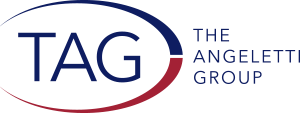Friendraising Your Way to Fundraising: How to Identify Your Next Generation of Donors
As development consultants, one of the most common questions we hear from our clients is, “My biggest donors and the Board are experiencing donor fatigue. How do I find our next generation of philanthropists?” While this is a concern facing almost all fundraisers – from those who serve complex, established health systems to those who work for younger, growing independent schools – it’s a challenge particularly ubiquitous for smaller, community-based organizations and local, grassroots nonprofits.
We sat down with one of our seasoned fundraisers, Greer Polansky, to discuss unique challenges faced by community organizations that don’t have “built in” constituencies such as alumni or grateful patients. Greer shares her insight and strategies to overcome these challenges.
Q: What is the biggest challenge facing community organizations in acquiring donors/fundraising?
A: This has long been a challenge for community nonprofits. We often observe volunteer leadership and administrators struggle to share effectively the organization’s mission. It might not mean the mission statement is unclear, but if it isn’t clear enough to leadership, it will be hard for them to successfully reach new donors. It is important to work with your leadership to develop a clear, understandable elevator pitch that defines your mission.
Q: How do you identify potential donors for community organizations?
A: When you look at identifying and cultivating new donors, the first step is to start with your current board and donors. They often have contacts they may not know are potential prospects. It’s important to share community lists with them. Be creative with how you build your lists – some trustees, for example, might have grown children that you can try to engage to reach the next generation of donors.
Look to staff; they often interact with constituents you know nothing about and can provide valuable information from capacity to affinity, and how you might be able to engage them. Finally, consider building lists of aspirant prospects. These are often philanthropists in the community you might have no connections to, but you hope might be able to become part of the organization in the future. With those names on a list, one day, they might “pop up” and you’ll be ready to engage them.
Q: In your experience, what are some of the best ways to cultivate new potential donors?
A: Getting prospects involved in your organization is one of the best ways to get to know them. Consider what is important to the community you want to engage. For some, it might be black tie dinners. For others, it might be opportunities to engage their children at a community day. Consider donor recognition opportunities that might engage the next generation without being too high for them to reach. For any experiences like these, trustees and executive members of the organization are encouraged to attend in order to get to know new individuals and excite them about the organization.
Q: Today, many nonprofits are focused on engaging “the next generation.” What are some shifts you have seen organizations take to better reach these new potential donors?
A: One of the things I have seen is the national day of giving. Most have heard of Giving Tuesday, which really appeals to younger people, but many organizations have adopted their own giving day. It is a low commitment and only once a year, but it really engages younger donors, especially those who communicate with the causes they care about online. Annual fund challenges are also popular among all age groups. Instead of setting monetary goals, participation goals can also be key. A lot of development offices will utilize video, social media, and email. These channels appeal to all groups of people and give them a sense of pride to help the organization reach a specific goal.
Q: In regard to the younger generation, how do you develop messaging that appeals to all age groups when there are so many differences in how they communicate?
A: Here are some hard truths about it. In a capital campaign, you have to spend the majority of the time where the most money is, which is the top of the pyramid – typically a generation of donors who are 50+ and value and appreciate face-to-face communication. That said, if you don’t begin to engage younger generations, you will not have them in 20-30 years to become major donors. For fundraising professionals, it is a fine line between spending enough time engaging the next generation while spending time with people who can make lead gifts. What is most important is that you spend time on both! To have a better understanding of the best messaging, talk to your younger staff and/or constituents and ask them how they like being addressed or how to get their age group involved. While the senior level administrators are spending time with the top donors, younger development officers can work to cultivate younger donors. And of course, you never know, there are younger people who are capable of making larger level gifts, so you have to be paying attention and train your team to build those relationships effectively.


